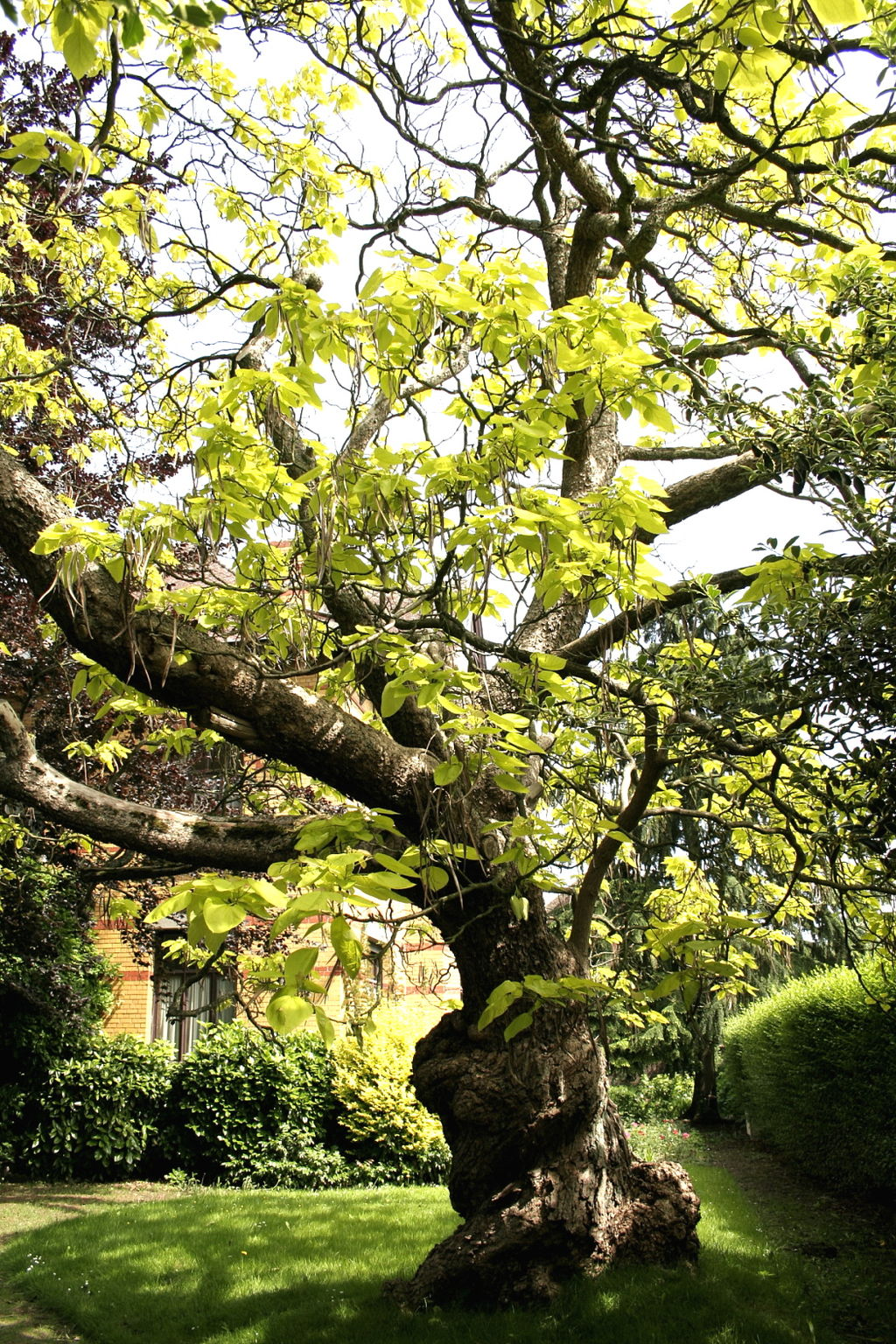Catalpa
No. in Woodland Park: 1
No. in good health: 1
No. in fair health: 0
No. in poor health: 0
Catalpa bignonioides is a species of Catalpa that is native to the southeastern United States in Alabama, Florida, Georgia, Louisiana, and Mississippi. Common names include southern catalpa, cigar tree, and Indian bean tree. It is a medium-sized deciduous tree growing to 15–18 metres (49–59 ft) tall, with a trunk up to 1 metre (3 ft 3 in) diameter, with brown to gray bark, maturing into hard plates or ridges. The short thick trunk supports long and straggling branches which form a broad and irregular head. The roots are fibrous and branches are brittle. Its juices are watery and bitter.
The leaves are large and heart shaped, being 20–30 cm long and 15–20 cm broad. The bright green leaves appear late and as they are full grown before the flower clusters open, add much to the beauty of the blossoming tree. They secrete nectar, a most unusual characteristic for leaves, by means of groups of tiny glands in the axils of the primary veins.
The flowers are 2.5–4 cm across, trumpet shaped, white with yellow spots inside; they grow in panicles of 20-40. In the northern states of the USA, it is a late bloomer, putting forth great panicles of white flowers in June or early in July when the flowers of other trees have mostly faded. These cover the tree so thickly as almost to conceal the full grown leaves.


